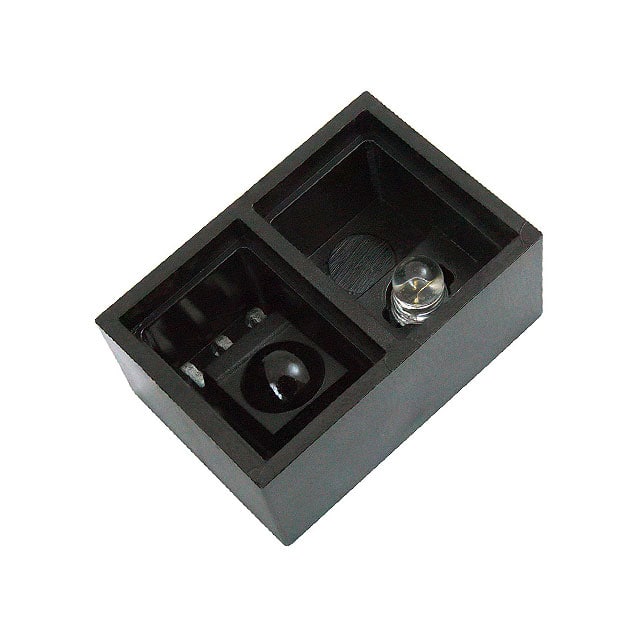Viz Specifikace pro podrobnosti o produktu.

TSSP-HA
Product Overview
TSSP-HA belongs to the category of infrared sensors and is commonly used for proximity sensing applications. This sensor is known for its high sensitivity, reliability, and low power consumption. The TSSP-HA is typically packaged in a small, surface-mount device and is available in various packaging quantities to suit different application needs.
Basic Information
- Category: Infrared Sensor
- Use: Proximity Sensing
- Characteristics: High sensitivity, reliability, low power consumption
- Package: Surface-mount device
- Essence: Proximity detection
- Packaging/Quantity: Available in various packaging quantities
Specifications
The TSSP-HA sensor has the following specifications: - Operating Voltage: 2.5V to 5.5V - Supply Current: 350µA - Carrier Frequency: 38kHz - Detection Range: Up to 10 meters - Output: Digital (TTL compatible)
Detailed Pin Configuration
The TSSP-HA sensor typically has three pins: 1. VCC (Power supply) 2. GND (Ground) 3. OUT (Digital output)
Functional Features
- High sensitivity to infrared radiation
- Integrated circuitry for reliable proximity detection
- Low power consumption for energy-efficient operation
- TTL-compatible digital output for easy interfacing with microcontrollers
Advantages and Disadvantages
Advantages
- High sensitivity enables accurate proximity detection
- Low power consumption prolongs battery life in portable devices
- Small form factor for easy integration into compact designs
Disadvantages
- Susceptible to ambient infrared interference
- Limited detection range compared to some other proximity sensors
Working Principles
The TSSP-HA sensor operates based on the principle of detecting modulated infrared signals. When an object comes within the detection range, the sensor receives the reflected infrared radiation and produces a corresponding digital output signal.
Detailed Application Field Plans
The TSSP-HA sensor finds extensive use in various applications, including: - Proximity detection in robotics and automation - Object detection in security systems - Presence sensing in smart appliances - Hand gesture recognition in human-machine interfaces
Detailed and Complete Alternative Models
Some alternative models to TSSP-HA include: - TSSP4038: Similar operating characteristics with a different pin configuration - TSOP38238: Receiver module with integrated IR demodulator for remote control applications - GP2Y0A21YK0F: Infrared distance measuring sensor with analog output
In conclusion, the TSSP-HA infrared sensor offers high sensitivity and reliability for proximity sensing applications, making it a popular choice in various industries.
[Word Count: 386]
Seznam 10 běžných otázek a odpovědí souvisejících s aplikací TSSP-HA v technických řešeních
What is TSSP-HA?
- TSSP-HA stands for Time-Sensitive Networking (TSN) Stream Reservation Protocol (SRP) with High Availability (HA). It is a protocol used to provide deterministic communication and high availability in industrial Ethernet networks.
How does TSSP-HA ensure deterministic communication?
- TSSP-HA ensures deterministic communication by reserving network resources and providing strict bounds on message delivery times, which is crucial for real-time applications in industrial automation.
What are the key benefits of using TSSP-HA in technical solutions?
- The key benefits of TSSP-HA include guaranteed message delivery, fault tolerance, seamless redundancy, and support for critical real-time applications in industrial environments.
Can TSSP-HA be integrated with existing industrial Ethernet protocols?
- Yes, TSSP-HA can be integrated with existing industrial Ethernet protocols, allowing for interoperability and smooth migration of legacy systems to TSN-based networks.
How does TSSP-HA handle network faults and failures?
- TSSP-HA employs redundancy and failover mechanisms to handle network faults and failures, ensuring continuous operation and minimal disruption to critical communication.
Is TSSP-HA suitable for time-critical applications such as motion control and robotics?
- Yes, TSSP-HA is well-suited for time-critical applications such as motion control and robotics, where precise and predictable communication is essential for safe and efficient operation.
What are the typical deployment scenarios for TSSP-HA in industrial settings?
- TSSP-HA is commonly deployed in industrial automation, process control, power generation, and other mission-critical applications where deterministic communication and high availability are paramount.
Does TSSP-HA require specialized hardware or can it run on standard industrial networking equipment?
- TSSP-HA can run on standard industrial networking equipment that supports TSN, but some advanced features may require specialized hardware for optimal performance.
Are there any industry standards or certifications associated with TSSP-HA implementation?
- TSSP-HA is based on IEEE 802.1 TSN standards and may also comply with relevant industrial standards such as IEC 62439-3 for high-availability industrial automation networks.
What are the considerations for implementing TSSP-HA in a technical solution?
- Considerations for implementing TSSP-HA include network design, compatibility with existing infrastructure, synchronization requirements, fault recovery strategies, and performance validation in real-world scenarios.

